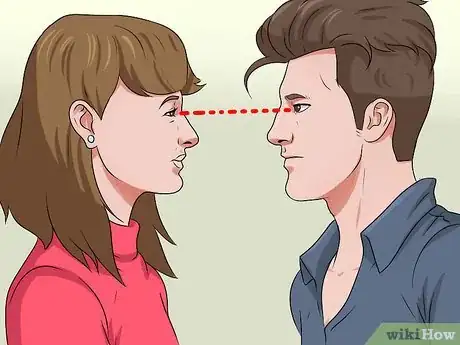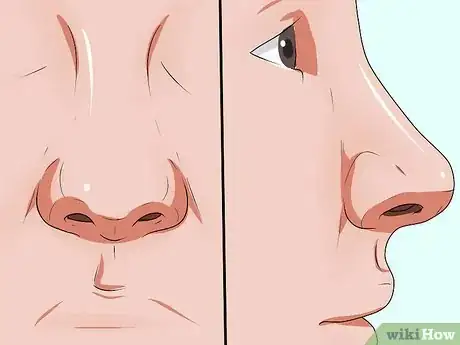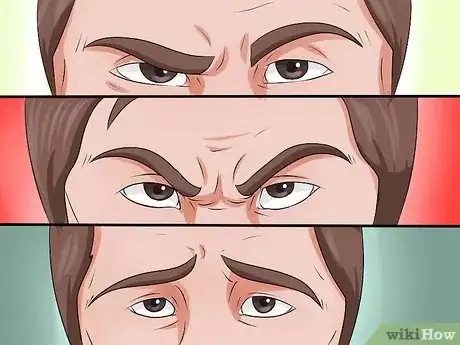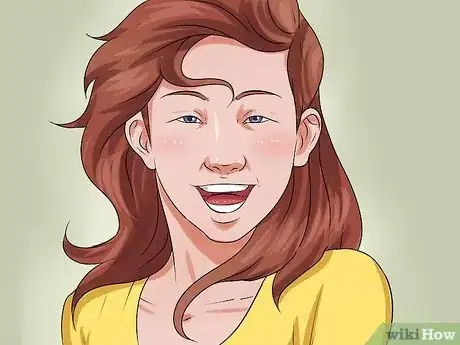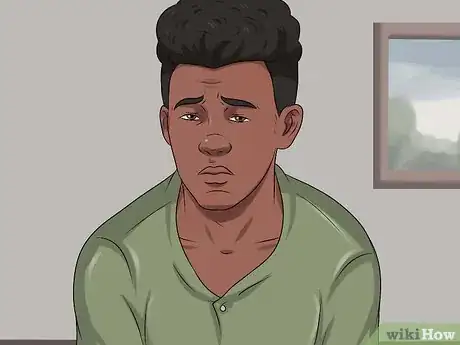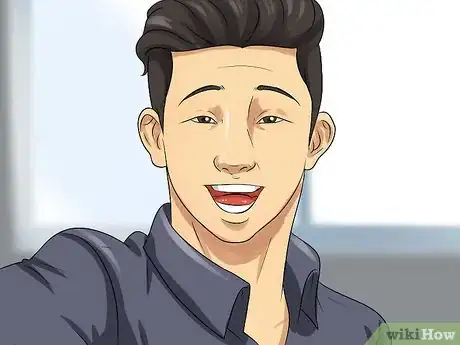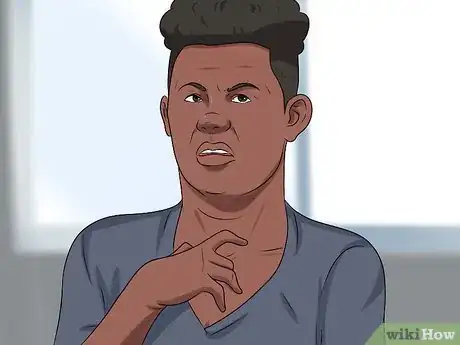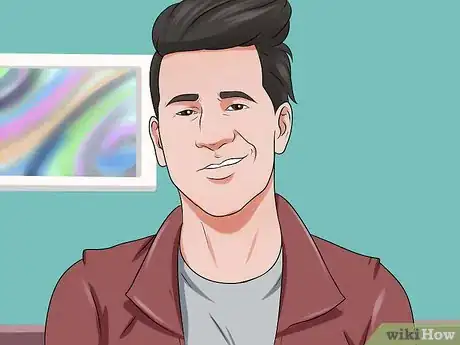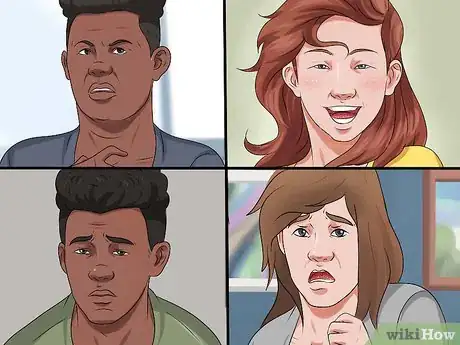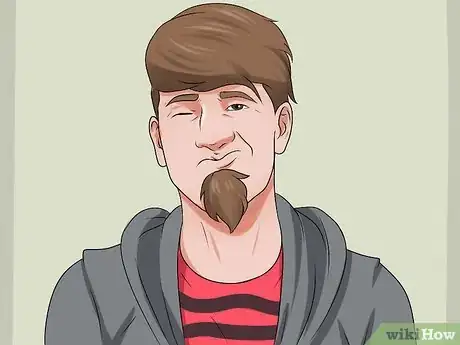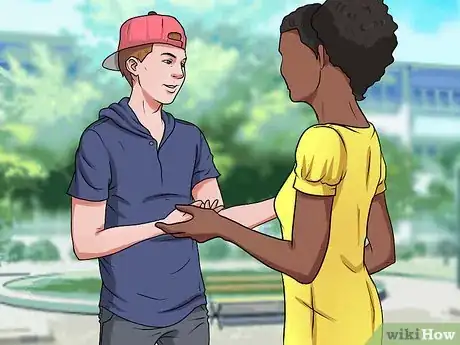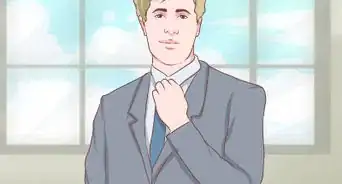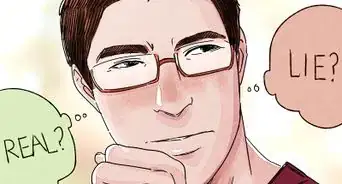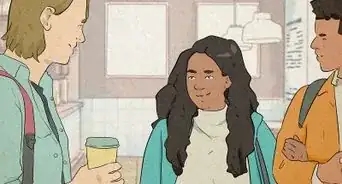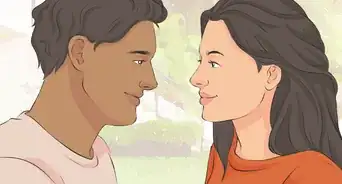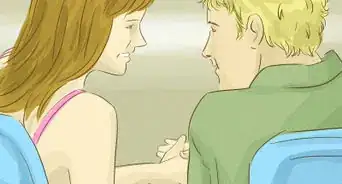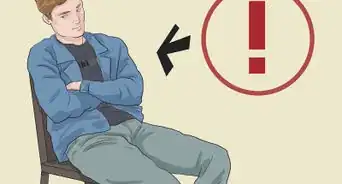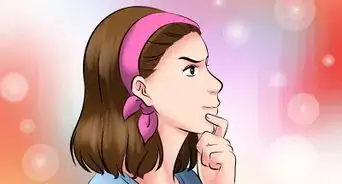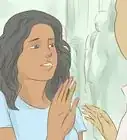wikiHow is a “wiki,” similar to Wikipedia, which means that many of our articles are co-written by multiple authors. To create this article, 38 people, some anonymous, worked to edit and improve it over time.
There are 9 references cited in this article, which can be found at the bottom of the page.
wikiHow marks an article as reader-approved once it receives enough positive feedback. This article has 16 testimonials from our readers, earning it our reader-approved status.
This article has been viewed 737,731 times.
Learn more...
Reading faces is a vital skill. When trying to communicate with another human being, it's helpful to understand what potential emotions that person may be experiencing. In interpersonal relationships, you'll be able to take better care of those close to you. When thrown into a professional endeavor, you'll have a better understanding of your co-workers and clientele. You'll have to pay close attention, however, as slight shifts in facial expressions can represent vastly different feelings.
Steps
Reading the Face
-
1Stare into their eyes. When reading a face, you'll want to start with the eyes, the most suggestive of all facial features.[1] You'll learn a great deal about a person's mood by paying close attention to their eyes.
- The pupils dilate during moments of stimulation, or in low lighting. If you are in a location with constant light, notice shifts in pupil size. A large pupil suggests some sort of arousal or interest.
- Our pupils shrink when we see something offensive or negative. This constriction blocks off any unwanted images.
- A person may squint if they do not like you or what you're saying. They also may be suspicious of your words and actions. If you notice this occurring, address the issue and clarify what you're saying.
- A darting eye suggests insecurity or discomfort. You can also detect these feelings through sideways glances. Any break in eye contact proves that a person isn't fully present.
-
2Notice the lips. Lip muscles are extremely delicate and shift to reflect various moods and reactions. When a person begins to speak, their lips will part slightly.[2] Pay attention to this, as you always want to be open and available when someone wants to speak with you.
- A lip that points inward is called a pursed lip. The pursed lip indicates tension, frustration, or disapproval. A person with a pursed lip is restraining whatever emotion they are experiencing, effectively holding the words back by tightening their lips.
- Puckering the lips into a kiss shape indicates desire. A puckered lip may also suggest uncertainty, as can a sucked in lip. This is often referred to as "swallowing the lips."
- Pay close attention to grimaces or twitching in the lips. While very slight, these tiny changes indicate cynicism or disbelief in circumstances. A liar will also give themselves away with a slightly twitching lip.
Advertisement -
3Assess the motion of the nose. While the nose changes less than the eyes or lips, its central location on the face makes it easy to read.[3]
- The flared nostril is a common shift. When it widens, it allows more air to pass in and out, preparing a person for combat. Flared nostrils indicate that a person is experiencing anger or displeasure.
- The nose may wrinkle as a result of a bad smell. Beyond the literal interpretation, a metaphorical "bad smell," such as an unpleasant sight or thought, causes the nose to wrinkle. If a person is thinking, they may wrinkle their nose when they have a thought that they don't approve of.
- Sometimes, blood vessels in the nose will dilate, making the nose appear red and swollen. This will occur when a person is lying. They may also scratch their nose, irritating it further.
-
4Study the eyebrows. Often connected to the eyes, the eyebrows fit into a wide variety of body language communications.[4] Despite the limited number of muscles attached to them, the eyebrows are highly visible and suggestive of different emotional states.
- The wrinkling of the forehead works in tandem with the eyebrows. If the forehead wrinkles and the eyebrows raise, the other person is likely questioning your behavior or surprised by their surroundings.
- When the eyebrows lower, the eyes will be slightly concealed. When paired with a lowered head, this suggests a desire to hide the motion of the eyes.
- Eyebrows that slope inward while being pulled down suggest anger or frustration. They also may suggest intense concentration.
- Look out for a horseshoe-shaped fold between the brow. Known as "Darwin's grief muscle," this peculiar symbol displays grief or sadness.
Understanding Different Emotions
-
1Perceive happiness. A large smile is the most obvious way to characterize happiness. Different from a grin, a smile will expose only the upper teeth. The lower lids of the eyes should form crescent shapes.
- There’s a large spectrum of happiness. Ranging from contentment to bliss, this wide variety of emotion can all be detected by similar facial expressions.
-
2Identify sadness. Pay close attention to the eyebrows. They will be slanting upward. A sad person will also be frowning. You can generally assume sadness for any person that you notice frowning.
- Look for loose eyelids that droop over the eyes slightly.
- The opposite of happiness, sadness is a dangerous and potent emotion. In addition to the facial changes, you may notice a drop in energy in a sad person.
- Individuals experiencing sadness may also become more reserved and withdrawn.
-
3Recognize surprise. An often exciting emotion, surprise can be characterized by wide open eyes and an open gaping mouth. In more mild cases of surprise, there might be a slight smirk to the mouth.
- The eyebrows will be pulled up very high.
- A person may frown when experiencing surprise, but this frown might edge the emotion toward shock instead. A slightly more extreme emotion, shock can have a certain element of fear or disgust attached to it.
- Any sudden blast of wonder of astonishment might lead someone to feel surprised.
-
4See fear. Look to the eyebrows and eyes first. The eyebrows will be slanted upward, and the eyes will be wide open. The mouth might also be stretched open widely.
- Fear is our natural response to danger. If you see someone experiencing fear, look for a source of this response. This emotion is often related to the behaviors of escape and avoidance.
- Remember that fear is different than anxiety. Fear always comes from an external threat, while anxiety is generated from within.
-
5Notice disgust. The wrinkled nose is one of the primary attributes of the expression of disgust. The eyebrows will also lower, and the mouth will hang open.
- Think of the mouth as silently mouthing a “blegh” sound, as if the person has just seen something revolting. The lips will hang loose, and the upper lip will pull up.
- While disgust might come as a response to eating or smelling something disgusting, the emotion can also be vividly imagined. Both experiences will provoke the same facial expression.
-
6Detect anger. When looking for anger, notice the eyebrows. They will be lowered and slanted inward, creasing together into a wrinkle. The eyelids will be tight and straight, as the brow will be lowered.
- The mouth may be tight, or it may be open wide into a large scream.
- Their head might be lowered a bit, and the jaw may be thrust forward.
-
7Find contempt. Used primarily to express disapproval, contempt will be marked by a raised chin. This makes it easier for a person to stare down their nose at whoever has insulted them.[5]
- The lip corner will tighten up and raise on one side of the face. This is often referred to as a sneer.
- There may be a slight smile attached to contempt, as if the person is enjoying their disapproval of your actions.
Evaluating Situations
-
1Read Macro expressions. When attempting to read a face, you'll want to start by looking for macroexpressions. A Macro expression typically lasts between 0.5 and 4 seconds.[6] These expressions will take over the entire face, giving you the full experience of this emotion.
- Even a basic understanding of the seven basic emotions will help you read macroexpressions. These universal expressions include joy, surprise, contempt, sadness, anger, disgust, and fear. You've no doubt experienced these seven expressions, so you'll have an easy time reading them in a macroexpression.
- If a person is expressing these feelings through a macroexpression, they are most likely attempting to get you to respond to their emotion.
- In the case of sadness, they may be asking you to comfort them. If you're faced with a macroexpression of contempt, however, they might be trying to intimidate you.
- Know that it's easiest to manipulate a false emotion through macroexpression. Because it lasts longer, it's easier to settle into the performance of this emotion. Don't allow yourself to be deceived by false macroexpressions.
-
2Catch microexpressions. Microexpressions typically last between 1/15 and 1/25 of a second, making them much harder to detect in another person. [7] While a macroexpression may reveal how someone is feeling, it's more likely that truth will be revealed in the microexpression.
- When someone attempts to conceal an emotion, there may be some "leakage" of their actual emotion. This slip typically occurs in the microexpression. If you aren't paying close attention to the face, you may miss the real emotion this person is feeling.
- If you're hoping to get a deeper understanding of a person, you must be sensitive to microexpressions. An intimate knowledge of how someone is feeling is crucial to developing sensitive personal relationships.
- While a macroexpression may tell the truth, there's a chance that a person may be trying to elicit a response by "putting on" this emotion. When paying close attention to microexpressions, you're less likely to miss the actual emotion.
-
3Understand subtlety. Subtle expressions are even smaller than microexpressions, so detecting them requires a great deal of attention. These expressions arise before an emotion is even completely felt, coming as natural responses to ones' surroundings.[8]
- Subtle expressions also may not be a full expression of one emotion. In a microexpression, a full emotion flashes for a short period of time. A subtle expression, however, may only contain pieces of a full emotion.
- These tiny expressions may be key to discovering deception, as the slightness of their occurrence can be concealed more easily than a microexpression.
-
4Pair emotions with body language. After mastering facial recognition, you can start to study body language. Body language, like facial expression, is a key part of nonverbal communication. Recognizing shifts in physicality will help you more easily understand others.[9]
- When trying to analyze someone's confidence, you can look at their posture. If they're standing tall with their shoulders back, this person feels comfortable in their body. Any slouching suggests a lack of confidence.
- If a person is being honest with their emotions, they'll be able to hold solid eye contact with you. Any shifting in their eyes may suggest that they are lying.
- A person's manner of speaking can be wrapped up into body language. An even tone of voice will prove that the perceived facial emotion aligns with their internal emotion.
- Remember that certain psychological or cultural differences may factor into both body language and facial expression. You want to confirm your initial opinions about this person by continuing to get to know them. Initial readings are very useful, but may not always be completely accurate.
Community Q&A
-
QuestionHow can I tell when someone is lying?
 Community AnswerTheir pupils tend to dilate, and they tend to touch some part of their body, their nose or hands. Another way is body language. Slower speech, avoiding eye contact, and defensiveness are also signs.
Community AnswerTheir pupils tend to dilate, and they tend to touch some part of their body, their nose or hands. Another way is body language. Slower speech, avoiding eye contact, and defensiveness are also signs. -
QuestionHow can I know if the person wants to talk to me or not?
 Community AnswerIf they move forward or if their pupils grow larger or have solid eye contact with you, it's a sign that they're interested. But if they move away, sigh, or look away or get distracted, they're not.
Community AnswerIf they move forward or if their pupils grow larger or have solid eye contact with you, it's a sign that they're interested. But if they move away, sigh, or look away or get distracted, they're not. -
QuestionHow do I know if someone is angry with me?
 Community AnswerAngry people tend to avoid conversation, eye contact or interest. A scowl or eye roll when you approach is another sign.
Community AnswerAngry people tend to avoid conversation, eye contact or interest. A scowl or eye roll when you approach is another sign.
References
- ↑ https://www.scienceofpeople.com/read-people-eyes/
- ↑ http://changingminds.org/techniques/body/parts_body_language/lips_body_language.htm
- ↑ http://changingminds.org/techniques/body/parts_body_language/nose_body_language.htm
- ↑ http://changingminds.org/techniques/body/parts_body_language/eyebrows_body_language.htm
- ↑ http://www.emotionalcompetency.com/contempt.htm
- ↑ http://www.apa.org/science/about/psa/2011/05/facial-expressions.aspx
- ↑ http://www.paulekman.com/micro-expressions/
- ↑ https://www.apa.org/science/about/psa/2011/05/facial-expressions
- ↑ https://www.mindtools.com/pages/article/Body_Language.htm
About This Article
To read faces, start by learning to identify the seven basic emotions of happiness, sadness, surprise, fear, disgust, anger, and contempt. For example, disgust is characterized by a wrinkled nose, lowered eyebrows, and open mouth, while contempt is as simple as a raised chin and one-sided smile or sneer. Pay special attention to how the eyes and eyebrows form these emotions as they are the most suggestive parts of the face. Then, learn to spot micro expressions, which are small, temporary anomalies in facial expressions. If you want to learn more about how to read body language along with facial expressions, keep reading the article!
